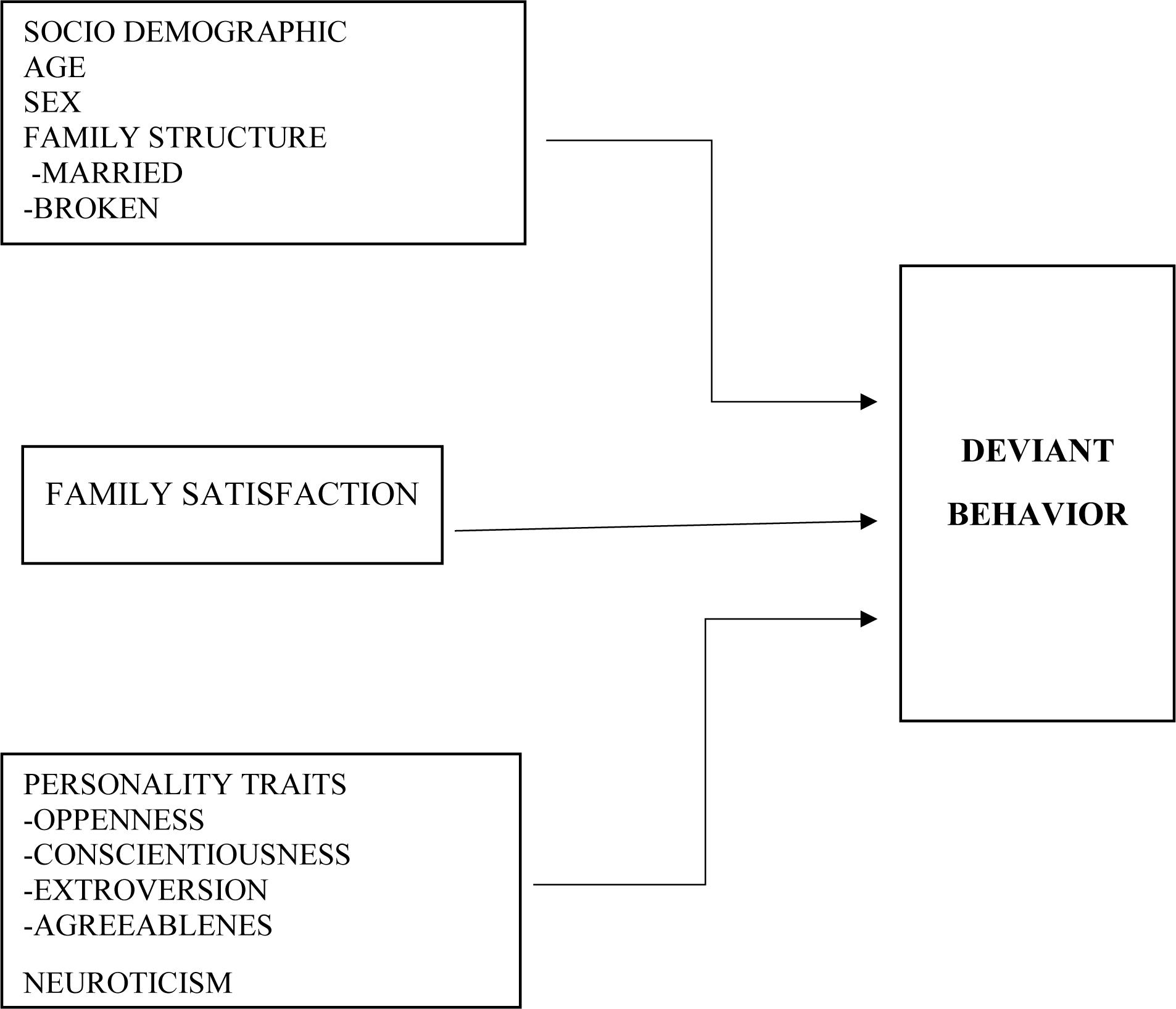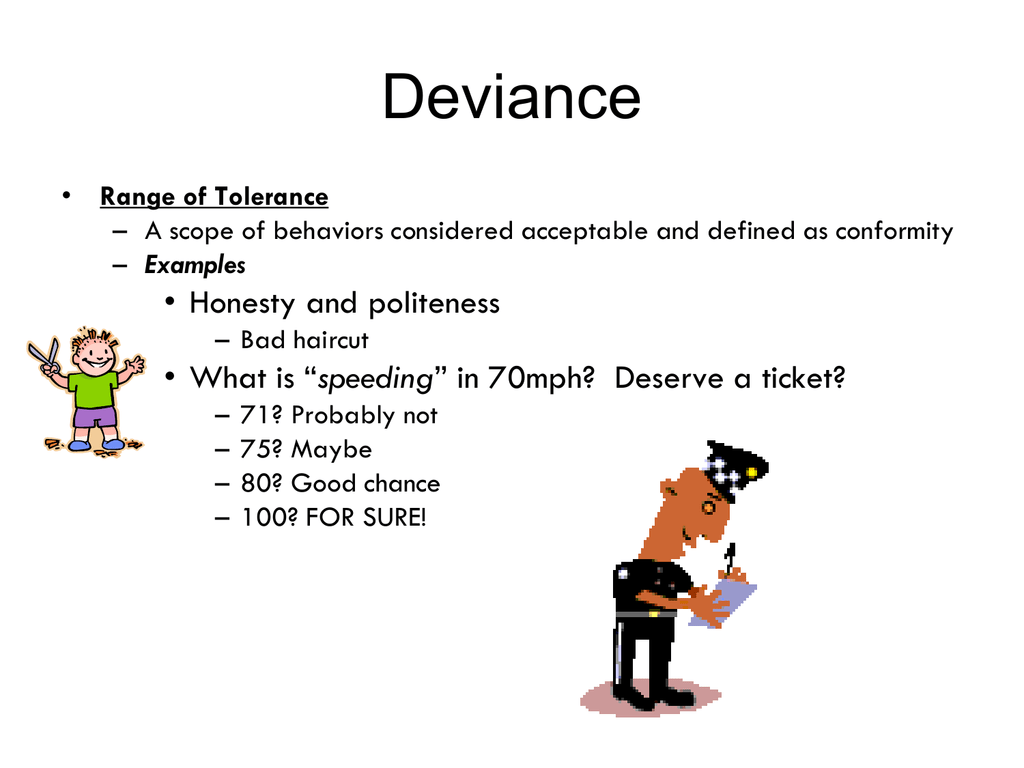Imagine a bustling city street. A man in a bright pink suit, a woman with a face covered in intricate tattoos, a group of individuals chanting slogans in a language you don’t understand – all these scenarios challenge the established norms of our society. They make us pause, question, and even judge. But what exactly constitutes deviance? And how do we understand the diverse forms it takes? This journey into the realm of deviance is not about moral judgment; it’s about unraveling the complex tapestry of social behaviour and exploring the boundaries we navigate every day.

Image: childhealthpolicy.vumc.org
Deviance, in its simplest form, refers to any behaviour, belief or characteristic that violates social norms and elicits disapproval. It’s not simply about ‘bad’ or ‘wrong’ actions, but about actions that transgress the unwritten rules and expectations that govern how we interact and behave within our communities. These rules, though often unspoken, are deeply ingrained in our cultural fabric, influencing everything from our dress code to our political views. Understanding deviance is crucial because it helps us navigate social complexities, fosters empathy, and unravels the intricate dance between individual choice and collective expectations.
Exploring Deviance: A Kaleidoscope of Forms
The world of deviance is not a monolithic concept, rather a vibrant tapestry woven from multiple threads. These threads, each representing a distinct form of deviance, are intricately connected, often overlapping and influencing one another.
1. Statistical Deviance: Where Numbers Speak Volumes
Imagine a classroom where most students are wearing jeans and T-shirts. One student arrives in a tuxedo. This is an example of statistical deviance: behaviour that deviates from the statistical average. While not inherently wrong or right, the tuxedo-clad student stands out, drawing attention and potentially sparking curiosity or even discomfort. This form of deviance highlights that what is considered ‘normal’ is largely based on numerical prevalence, and anything outside the norm, statistically speaking, can be classified as deviant.
2. Social Deviance: When Norms Collide
Social deviance occurs when behaviour violates social norms, eliciting disapproval from others. These norms are multifaceted, encompassing cultural, religious, ethical, and legal expectations. A person who loudly breaks into a song in a library would be considered socially deviant, as it disrupts the expected behaviour of silence and focus within that setting. Social deviance is often connected to power dynamics, with those in positions of authority often dictating what is considered acceptable and unacceptable.

Image: sharedocnow.blogspot.com
3. Criminal Deviance: Crossing the Legal Line
Criminal deviance refers to actions that violate established laws and are subject to legal sanctions. From petty theft to murder, criminal deviance often carries consequences like fines, imprisonment, or even the death penalty. Laws evolve through societal changes and reflect the collective values and perspectives of a particular society. Yet, what constitutes criminal deviance can be subjective and vary across cultures and time periods.
4. Medical Deviance: Beyond the Boundaries of Normality
Medical deviance, often referred to as “abnormality,” involves physical or mental conditions that deviate from the accepted standards of health. Examples include genetic disorders, mental illness, and physical disabilities. While these conditions are not a matter of choice, they can often lead to social stigmas and discrimination, further highlighting the complexities of how we perceive deviance.
5. Political Deviance: Challenging the Status Quo
Political deviance, often fueled by social inequalities and injustices, involves actions that challenge the existing social order and political structures. From peaceful protests and civil disobedience to acts of rebellion and revolution, political deviance seeks to dismantle existing power dynamics and advocate for social change. This form of deviance is frequently at the heart of social movements, reflecting the struggle for equality and justice.
Understanding Deviance: Moving Beyond the Label
While understanding these diverse forms of deviance is essential, it’s crucial to appreciate the inherent complexities involved. Labeling someone or their behaviour as ‘deviant’ without exploring the underlying context risks perpetuating harmful judgments. We must consider the social context, the historical influences, individual circumstances, and the perspectives of those involved in order to understand the motivations and complexities behind any act deemed ‘deviant.’
Beyond Judgement: Towards Understanding
Instead of focusing solely on the act of deviance itself, we can choose to focus on understanding the social, political, and cultural forces that contribute to both conformity and deviance. By examining individual motivations, historical contexts, and the nuanced interplay of power dynamics, we can move beyond simplistic categorization and cultivate empathy for diverse experiences.
Actionable Steps: From Curiosity to Compassion
To truly engage with the complexities of deviance, we must move beyond passive observation. We can:
- Challenge our own biases: Reflect on our own ingrained assumptions about what constitutes “normal” and “deviant” and question the origins of these beliefs.
- Engage in critical thinking: Explore different perspectives on deviance, avoiding the trap of judging or condemning those who choose to deviate from social norms.
- Embrace open dialogue: Engage in respectful conversations about differences, encouraging empathy and understanding within our communities.
Forms Of Deviance
The Importance of Empathy
In a world often driven by judgment and conformity, our ability to recognize and understand deviance is critical. It allows us to appreciate the kaleidoscope of human experiences, challenge societal norms, and advocate for a more inclusive and just world. As we journey through life, let us hold onto the power of empathy, reminding ourselves that while we may not always understand, we can always strive to engage with the complexities of human behaviour.






